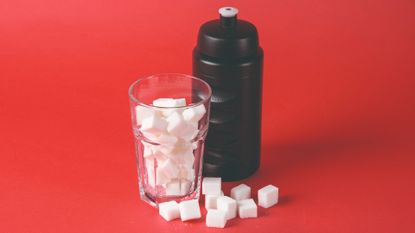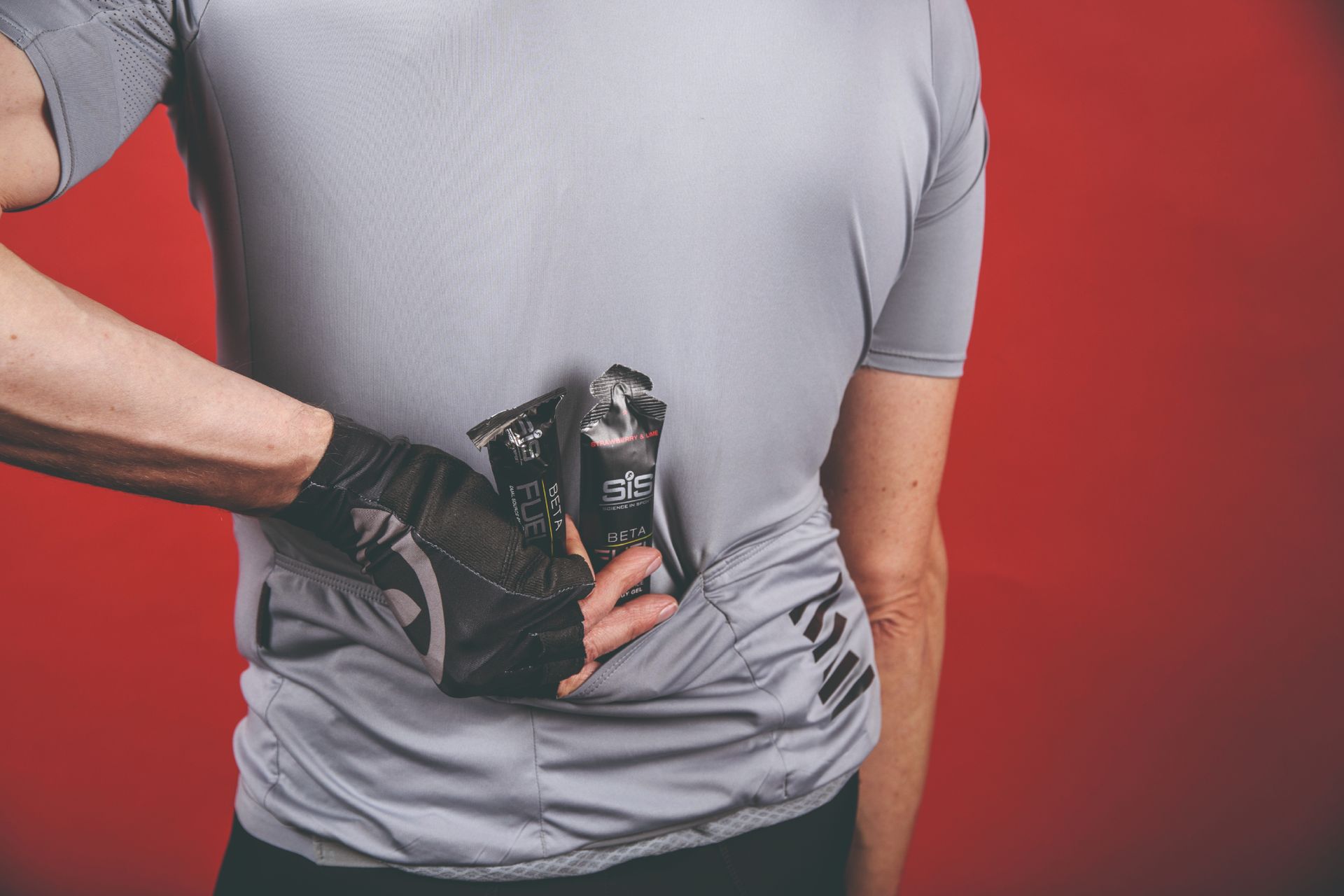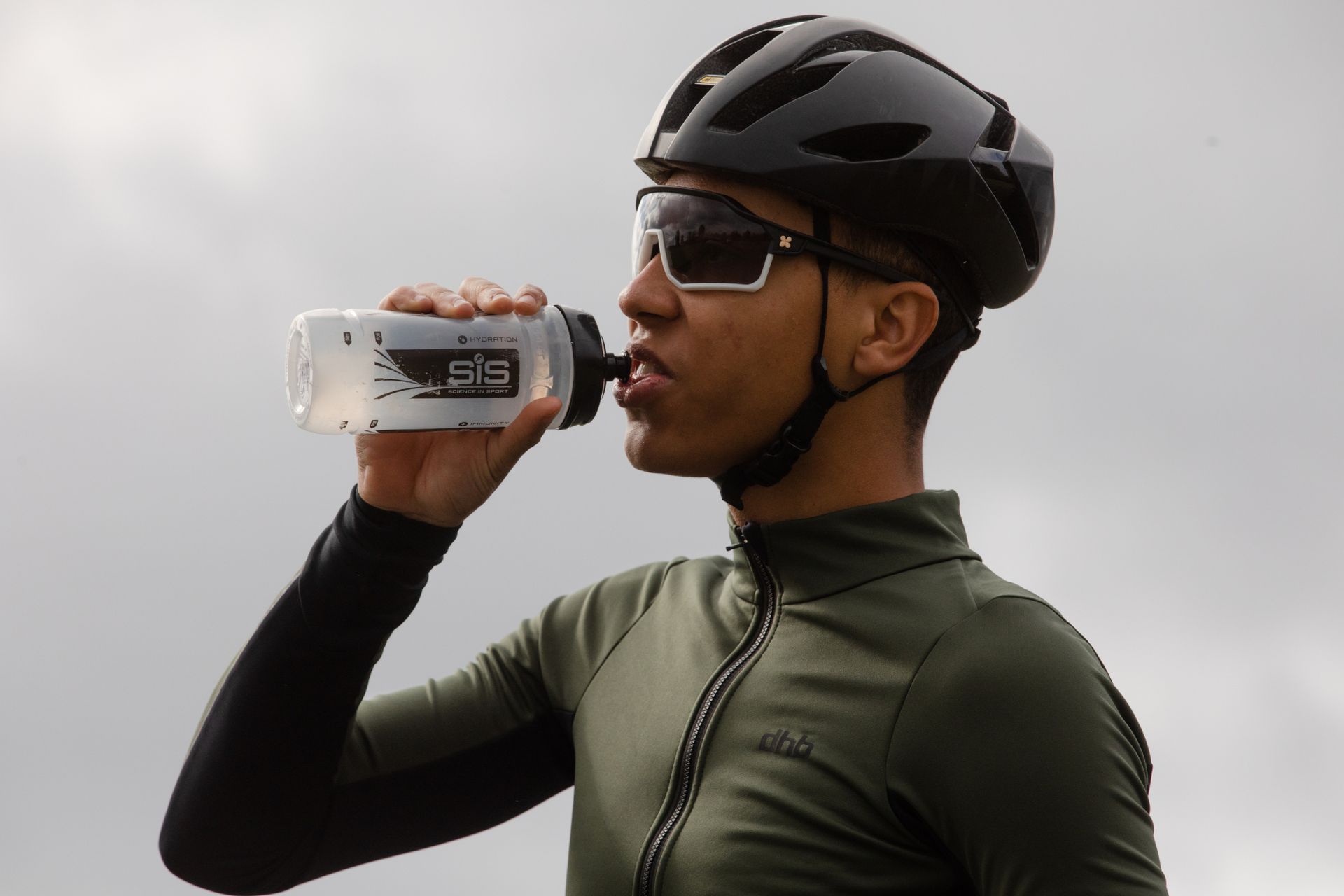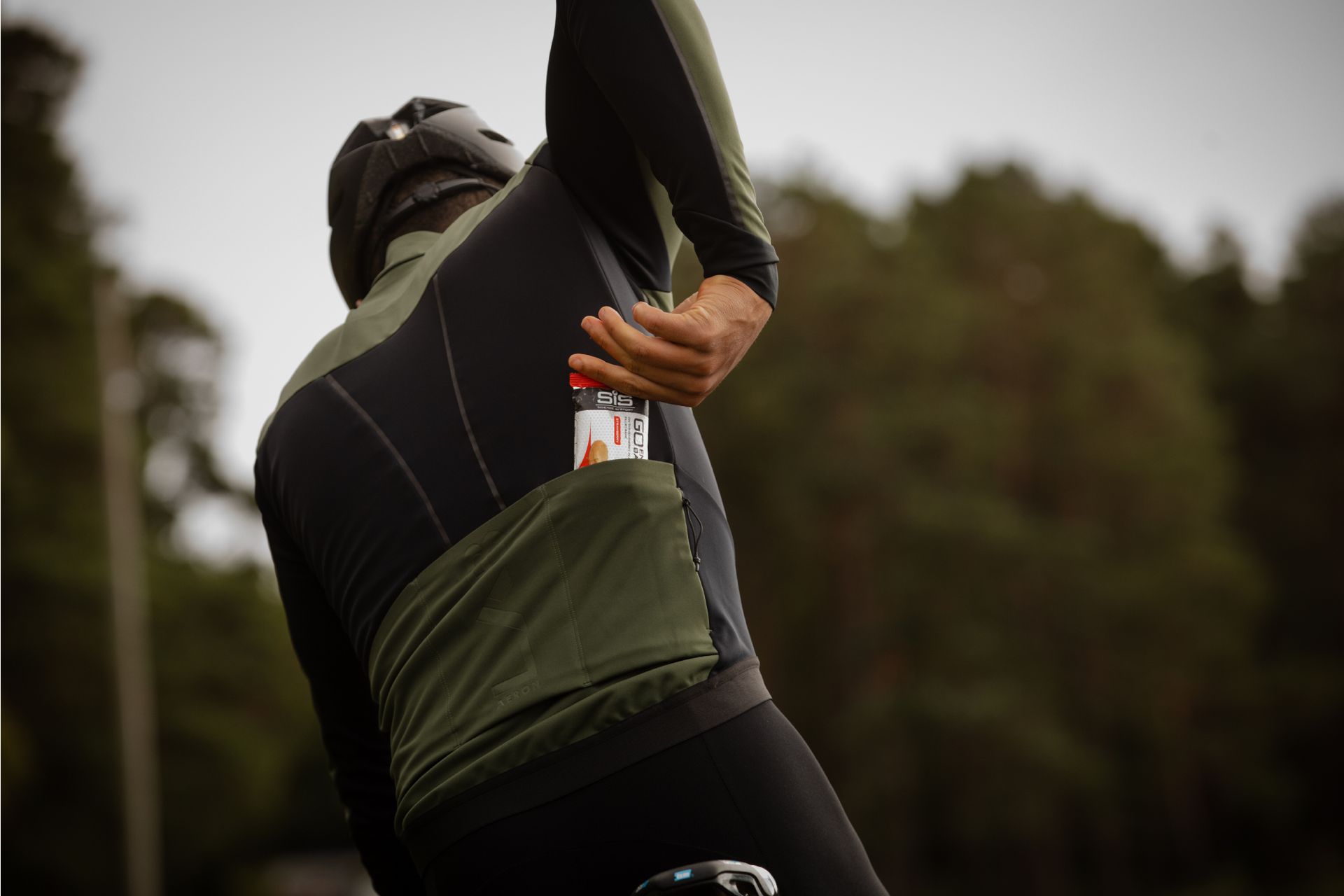Bittersweet: do cyclists consume too much sugar?
Nutritionist Anita Bean assesses whether cyclists should cut down their sugar intake and look elsewhere for energy
- (opens in new tab)
- (opens in new tab)
- (opens in new tab)
- Sign up to our newsletter Newsletter


As cyclists our relationship with sugar is complicated. Essentially, it’s a balancing act. We need sugar to fuel our muscles while riding, but we also know that excessive sweet stuff can harm our health and performance. Like many things in life, there’s a fine line between too much and just the right amount.
The NHS recommends that we eat no more than 30g of ‘free’, or added, sugars a day (roughly equivalent to seven teaspoons). These sugars are called ‘free’ because they are not bound to the structure of the food, and include all sugars added by the manufacturer, cook or consumer, as well as those contained in fruit juice and honey. The average person gobbles up 50g (12 teaspoons) a day – that’s almost double the NHS’s recommended dose. This overconsumption of sugar has been linked with a whole array of ailments including obesity, insulin resistance, type-2 diabetes, and cardiovascular disease.
Given that the best energy drinks and the best energy bars are crammed with the stuff – a single energy bar can contain more than half of the recommended daily limit – I wondered whether cyclists are in danger of unwittingly storing up future health problems. And if cyclists should be taking a different approach to their cycling nutrition.
Pros of sugar for cycling

Sugars are short-chain carbohydrates, and that’s exactly what fuel most of our riding. “When we exercise, we use carbohydrate as one of the main fuels,” explains Dr Javier Gonzalez, professor of nutrition and metabolism at the University of Bath.
“But we can quickly run out of stored carbohydrate in the liver and muscles, especially when that exercise is of higher intensity or prolonged duration. Sugar intake, in the form of sports drinks, bars and gels, is one of the ways we can help prevent depletion of glycogen and provide fuel to keep us going.” A meta-analysis of 73 studies by researchers at Auckland University of Technology, New Zealand, found that sugar consumption during exercise led to an improvement in performance of up to 6 per cent.
Natural vs added sugar
Most of the sugar in cakes and biscuits is ‘free’ or ‘extrinsic’: sugar added to foods that is not bound to the structure of a food. In contrast, naturally occurring or ‘intrinsic’ sugar is found bedded into the structure of cells of foods such as fruit, vegetables and dairy. This means it comes with other components such as fibre, which slows the absorptions of sugars into the bloodstream. Eating lots of ‘free’ sugars is likely to spike your blood glucose levels, and if you don’t use the energy they provide, they are more likely to end up stored as fat.
Cons of sugar for cyclists

Not all sugars are the same. Different types raise our blood sugar levels at different rates and are absorbed using different pathways. Fructose, found in fruit, has a slower rate of uptake than glucose, and when glucose and fructose are combined in the best energy gels or drinks, it allows your body to absorb more carbohydrate per hour than from either type of sugar alone – very useful for high-intensity rides when your body needs as much carbohydrate as it is able to absorb.
However, the performance benefits of sugar can come at a price. Studies have shown that athletes who consume lots of energy drinks, gels and bars experience significant tooth decay and erosion. “These products are high in sugar and, as they are usually consumed at frequent intervals during exercise, they are particularly damaging to the teeth,” explains professor Ian Needleman, professor of periodontology and evidence-informed healthcare at University College London. “In our research with elite and Olympic athletes, we found that more than half have tooth decay at a level that requires intervention. That’s significantly more than in the general population.”
Professor Needleman’s research has also shown that poor dental health has a huge impact on performance. “Pain from poor oral health can affect your ability to train and compete, and can even affect eating,” he says. “I do not want to demonise sports products and am not saying that athletes shouldn’t be using them. However, they should be aware of the risks to oral health, which they can mitigate by taking simple measures.” Needleman recommends using a high-fluoride toothpaste (on prescription) twice a day and a fluoride mouthwash halfway through the day. “We advise twice-yearly check-ups because of the increased risk, and treat your dentist as an oral health coach to support your training.”
George Robinson, performance nutritionist for British Cycling, recommends using a two-bottle strategy, whereby the first bottle contains carbohydrates, and the other water. “By first ingesting the carbohydrate drink, you get the fuel for exercise, then follow with plain water to help remove sugar from the teeth and gums,” he explains.
Sugar alternatives for cyclists

So, could other types of carbohydrate with less tooth-damaging potential – say, potatoes – be a good alternative to sugar for fuelling your rides? In a study published in the Journal of Applied Physiology, a team of Illinois University scientists found no differences in the performance of endurance cyclists who ingested puréed potatoes and those who used energy gels at recommended amounts of about 60g per hour during a two-hour cycling challenge.
“At lower exercise intensities, potatoes would do a perfectly good job,” explains Gonzalez. “When you’re consuming less than 60g carbohydrate per hour, the source and format of that carbohydrate doesn’t matter. Any rapidly-digested carbohydrate – potatoes, rice, bananas – will do the job. The rate of digestion and absorption can keep pace with demand,” he explains. “But when you’re cycling hard, consuming more than 60g per hour, that’s when sugars can really play a useful role, especially in liquid or gel form.”
If the idea of eating potatoes doesn’t appeal, then don’t worry, there are other options. “Early on in long endurance rides, or when intensity is low, rice cakes, sandwiches, oat bars and other more savoury solid foods are good for providing sustained energy,” says James Moran, head of nutrition with Uno-X Pro Cycling Team. “The carbohydrate is absorbed into the bloodstream more slowly and those foods are more filling to help stop you from feeling hungry. Then again, if you’re on the bike for several hours, there’s only so much solid food you can eat to hit your carbohydrate target. So, you’ll probably need some sugars too.”
On easy rides of less than an hour, you don’t need to consume any food at all, provided you aren’t depleted when you start. Bear in mind too that during low intensity cycling, most of the energy used by the body comes from fat. For more intense rides and later in long endurance rides when glycogen levels are depleted, concentrated sources of sugar such as gels, energy drinks and chews get into the bloodstream and muscles fast. “Our riders use dual-source carbohydrate drinks, gels and chews. These contain a combination of maltodextrin and fructose, which allow you to increase the amount of sugar you can absorb per hour from 60g per hour up to 80-120g per hour,” says Moran.
Can consuming too much sugar on the bike cause health problems?

Given that a gel typically contains 20- 25g sugar, 40-50g in 500ml of energy drink, and about 20g in an energy bar, it’s easy to see how cyclists can greatly exceed the NHS’s 30g recommended daily intake in a single ride. According to Gonzalez, the NHS guidelines don’t apply to cyclists. “Within reason, there’s no upper limit on daily sugar intake for hard training cyclists,” he reassures. “There’s no real metabolic health detriment to people ingesting sugars if they are doing high levels of physical activity.” Moran concurs: “Because of the volume and intensity of training cyclists do, and their greater insulin sensitivity, I don’t see any problem from a health point of view.”
Many of the health risks associated with sugar are linked to consuming it at rest, not during exercise. In this scenario, when you consume sugar or any carbohydrate, blood glucose levels rise, which causes a rise in insulin levels so that glucose falls back into the normal range. Added sugars and refined carbohydrates, which form a large part of our diet in high-income countries, can cause a bigger rise in blood glucose than our bodies evolved to handle. That’s potentially bad news for our health because sustained high blood glucose increases the risk of poor insulin control, type-2 diabetes, cardiovascular disease and obesity.
But serious cyclists need not be unduly worried. Sugar metabolism during exercise is different. It is taken up by the muscle cells without the need for insulin. This means the sugar you consume doesn’t lead to a spike in insulin or contribute to the risk of type-2 diabetes. “If you are endurance-trained, you get chronic adaptation whereby you have greater insulin sensitivity,” explains Gonzalez. In other words, training increases your sensitivity to insulin, which means less insulin is required to move glucose from the blood into cells. Research shows highly trained athletes have an increased ability to process sugar compared to the average, nonactive person. What about concerns that sugar-rich diets can hike triglycerides (blood fats) and increase the risk of cardiovascular disease? Again, for those who do regular exercise, this doesn’t tend to happen.
In a study at the University of Lausanne, Switzerland, when volunteers consumed a high-fructose diet their blood fats concentration increased, but when they combined this diet with regular endurance exercise there was no increase in blood fat concentration. In other words, exercise prevented the rise in blood fats caused by a high fructose intake. Insulin concentration was also 19 per cent lower during the active intervention compared with the inactive one. These outcomes suggest that regular exercise may offset the harmful metabolic effects of sugar – good news for cyclists.
Should cyclists reduce sugar consumption off the bike?
Setting aside sports-specific energy food and drink, sugar in our everyday food and drink is a slightly different story. The sweetness it provides, especially when combined with lots of fat in the form of cakes, chocolates, biscuits and snacks, tastes tantalisingly good, perhaps even addictively so. Even so, it is not uniquely fattening. Your weight is determined by overall energy balance (calories in versus calories out), meaning that weight gain comes from excess calorie intake over weeks and months, regardless of the source.
“As a general rule, it’s a good idea to prioritise sugar for training rather than when you’re sitting on the couch,” says Moran. “But sugar is not necessarily bad when you’re off the bike. If you’re doing a hard training session the next day, then high-sugar foods such as jam, honey, fruit juice and energy drinks can help restore glycogen levels, ensure you achieve your energy requirements and avoid under-fuelling.”
So, what's the sweetspot?
As with so many things in life, it’s all about balance. Grazing on sugary foods all day while sitting at your desk may not be good for health, but those same foods eaten while on your bike offer fast-access fuel for your muscles, helping prevent fatigue and sustain peak performance. In fact, avoiding sugar could compromise your performance in HIIT workouts and races, or the later stages of a Zone 2 endurance ride. But there are downsides to sugar consumption, namely its corrosive effect on teeth.
Useful strategies to mitigate this risk include switching to starchy carbohydrates at lower ride intensities, ensuring regular tooth brushing, using higher fluoride toothpastes and employing a two-bottle strategy. The key message is reassurance: cyclists don’t need to be unduly concerned about the effect of sugars on their metabolic health, since regular exercise enhances insulin sensitivity and regulates blood triglycerides.
This full version of this article was published in the print edition of Cycling Weekly. Subscribe online (opens in new tab)and get the magazine delivered direct to your door every week.

Thank you for reading 10 articles this month* Join now for unlimited access
Enjoy your first month for just £1 / $1 / €1
*Read 5 free articles per month without a subscription

Join now for unlimited access
Try first month for just £1 / $1 / €1

Anita Bean is an award-winning registered nutritionist, internationally published author, health writer and former British bodybuilding champion. She specialises in sport and exercise nutrition and is passionate about helping athletes improve their performance in training and competition. She is the author of The Complete Guide to Sports Nutrition and The Vegan Athlete’s Cookbook and has written for Good Housekeeping, Waitrose Food and Women’s Running. Anita is also the nutritionist for RideLondon and the London Marathon. A strong advocate of an active lifestyle, Anita enjoys cycling, yoga, hiking and strength training.
-
-
 Closing the gap: David Gaudu emerges from Paris-Nice more confident than ever before
Closing the gap: David Gaudu emerges from Paris-Nice more confident than ever beforeThe Groupama-FDJ rider finished second overall at the Race to the Sun, but gained more than just the result
By Adam Becket • Published
-
 Goodbye lime: We need to talk about the Tour de France green jersey
Goodbye lime: We need to talk about the Tour de France green jerseyThere's change afoot at ASO's French races, with the combativity colour also undergoing a revamp
By Adam Becket • Published

